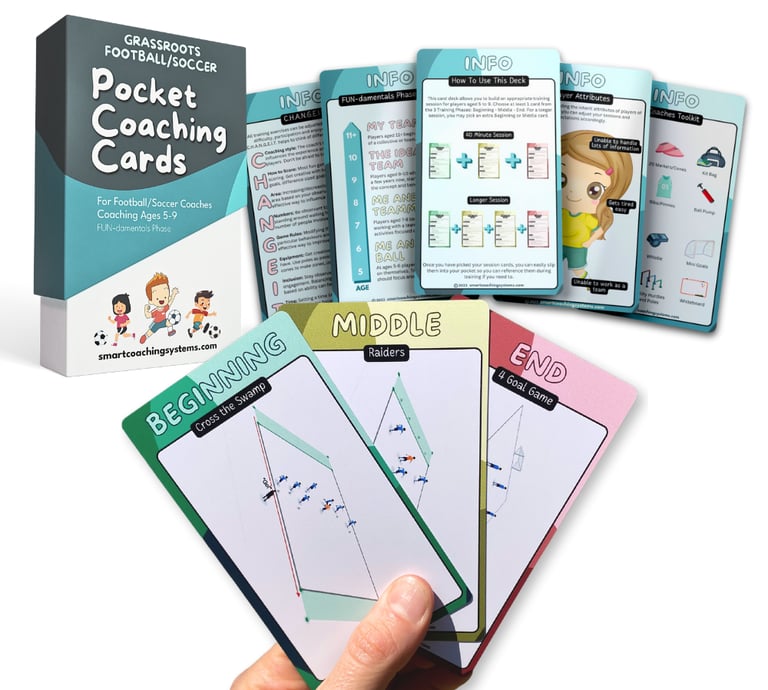Revolutionizing Youth Football/Soccer Training: No Laps, No Lines, No Lectures
The key to effective coaching in the modern game is ditching some of the stuff you may have grown up with as a young player.
COACHING INSIGHTS
Ben Foulis
5/22/20242 min read
Join the Coaching Circle
Join our free email group, the Coaching Circle, and never miss out on valuable coaching tips and resources. Stay updated with the latest posts, news, and exclusive offers available only to Coaching Circle members.


As youth football coaches, it’s vital to reconsider some of the traditional coaching methods that have long dominated the field. These methods are not just outdated but often ineffective when it comes to engaging young players and maximizing the limited time we have with them. Let’s explore three old-school coaching styles—laps, lines, and lectures—and why they might be holding your players back.
1. Rethinking Laps: Why have players run laps when there are far more engaging ways to warm up? Traditional lap running is a passive activity that lacks engagement and direct football skill development. Instead, consider dynamic warm-ups involving the ball, which can improve both physical readiness and technical skills. Fun, game-like activities that involve movement, teamwork, and laughter are not only more stimulating but ensure that every minute of practice contributes to player development. Every minute spent running in circles is a minute not spent learning game-specific skills or strategies.
2. Eliminating Lines: Standing in line is another common yet outdated practice that results in significant downtime and player disengagement. When players wait in line, they’re not actively learning or practicing. To combat this, optimize your drills to ensure that no more than three players are waiting for their turn. Consider setting up multiple stations or variations of the same drill, or incorporate those waiting into the drill in other roles. This keeps everyone involved and learning continuously, minimizing wasted time and maximizing engagement.
3. Cutting Down Lectures: Consider the amount of time you spend talking versus doing. Kids, much like adults, have limited attention spans. Lengthy lectures tend to lose their attention quickly—often, they retain very little from what is said. Instead of lengthy explanations, keep your instructions brief and to the point. Follow up with drills that allow them to explore these concepts in action. This hands-on approach helps players learn through experience, discovering solutions on their own, which is far more impactful than simply being told what to do.
By focusing on these areas, you can significantly enhance the effectiveness of your training sessions. Start by identifying one of these areas to improve in your next session. It may be challenging at first, but the effort will pay off not only in terms of player development but also in their engagement and enjoyment of the sport.
Remember, as a coach, your role is to facilitate a learning environment where players can grow, have fun, and develop a lasting love for the game. By moving away from laps, lines, and lectures, you open up a world of active, engaging, and effective training for your players. Good luck, coach—you’ve got this!
Pocket Coaching Cards
Build a training session for kids aged 5 to 9 in just 1 minute. Choose a green, a yellow and a red card and you have a structured, age appropriate, engaging and fun training session ready to run.


Join the Coaching Circle
Join our free email group, the Coaching Circle, and never miss out on valuable coaching tips and resources. Stay updated with the latest posts, news, and exclusive offers available only to Coaching Circle members.
© 2024. All rights reserved.
Smart Coaching Systems Pty Ltd | 81-83 Campbell St, Surry Hills NSW, 2010 | ABN: 48 670 375 443
